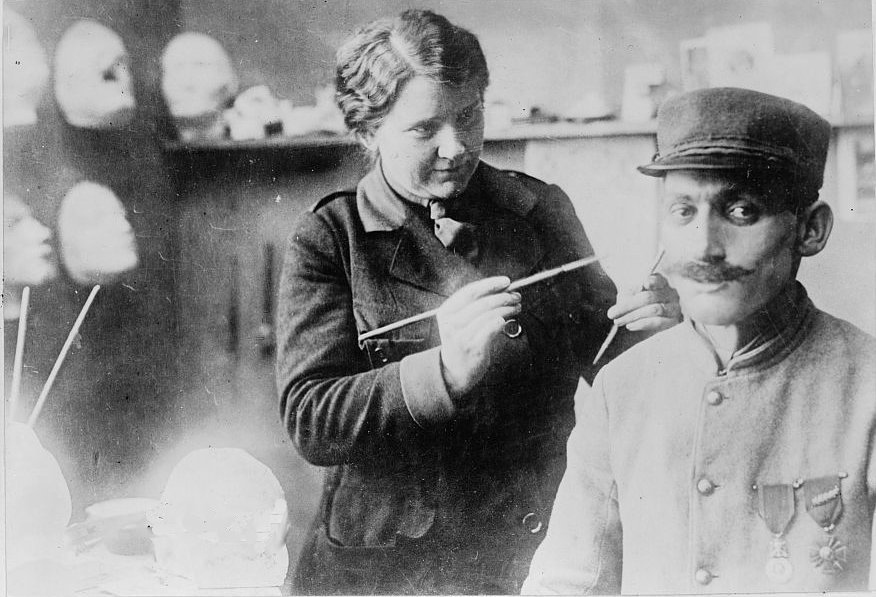The Original Facial Sculptor
In the depths of World War I's brutality, where the relentless fury of warfare left countless soldiers disfigured and shattered, one woman emerged as a the original facial sculptor. Anna Coleman Ladd, an extraordinary artist, dedicated her life transforming the lives of countless soldiers. She created intricately detailed facial masks, allowing them to regain their identities and reclaim their place in society.
In this article, we delve into the inspiring tale of Anna, whose artistry sculpted not just faces but also a profound legacy of resilience and compassion.
Who was she?
Anna Coleman Ladd (1878-1939) was an American sculptor and portrait artist who is known for her work creating masks and prosthetics for soldiers who were disfigured during World War I. Ladd traveled to France and established the "Studio for Portrait-Masks" in Paris in 1917. There, she worked with soldiers who had suffered severe facial injuries, primarily due to the use of new and devastating weapons such as chemical gas attacks. Ladd created lifelike masks that helped to cover their facial deformities and enable them to reintegrate into society.
Ladd's masks were made of thin metal sheets covered with a layer of colored wax to match the soldier's skin tone. She meticulously studied photographs of the soldiers before their injuries and used the images as references to recreate their features as accurately as possible. The masks were then attached to the soldiers' faces using eyeglass frames or silk ribbons.
Her work provided physical and psychological relief to the soldiers, allowing them to regain their self-confidence and reduce the stigma associated with their disfigurements. Ladd's sculptures were highly regarded for their attention to detail and the skillful craftsmanship she employed.
After the war, Ladd returned to the United States and continued her sculpting career. She created various works, including monuments and portrait busts. However, her most significant and influential contributions were her efforts to help the disfigured soldiers during World War I.
Anna Coleman Ladd passed away on June 3, 1939, in Santa Barbara, California. Her work and dedication to improving the lives of wounded soldiers have left a lasting impact on the field of medical aesthetics and rehabilitation.







In 1933, a shocking exhibit toured America, displaying products that had blinded women, caused permanent hair loss, and even killed unsuspecting consumers. The "American Chamber of Horrors," as it came to be known, featured genuinely toxic cosmetic products, that contrast sharply with how remarkably safe modern products actually are.
Yet somehow, in our era cosmetic safety and regulation, we've developed an irrational fear of "chemicals" and "toxins" in beauty products. The irony is striking: we've never been safer from cosmetic harm, yet we've never been more frightened of our makeup bags.
Let's explore how the real horrors of unregulated cosmetics led to the robust safety framework we have today - and why most modern "clean beauty" fears fundamentally misunderstand how cosmetic regulation actually works.